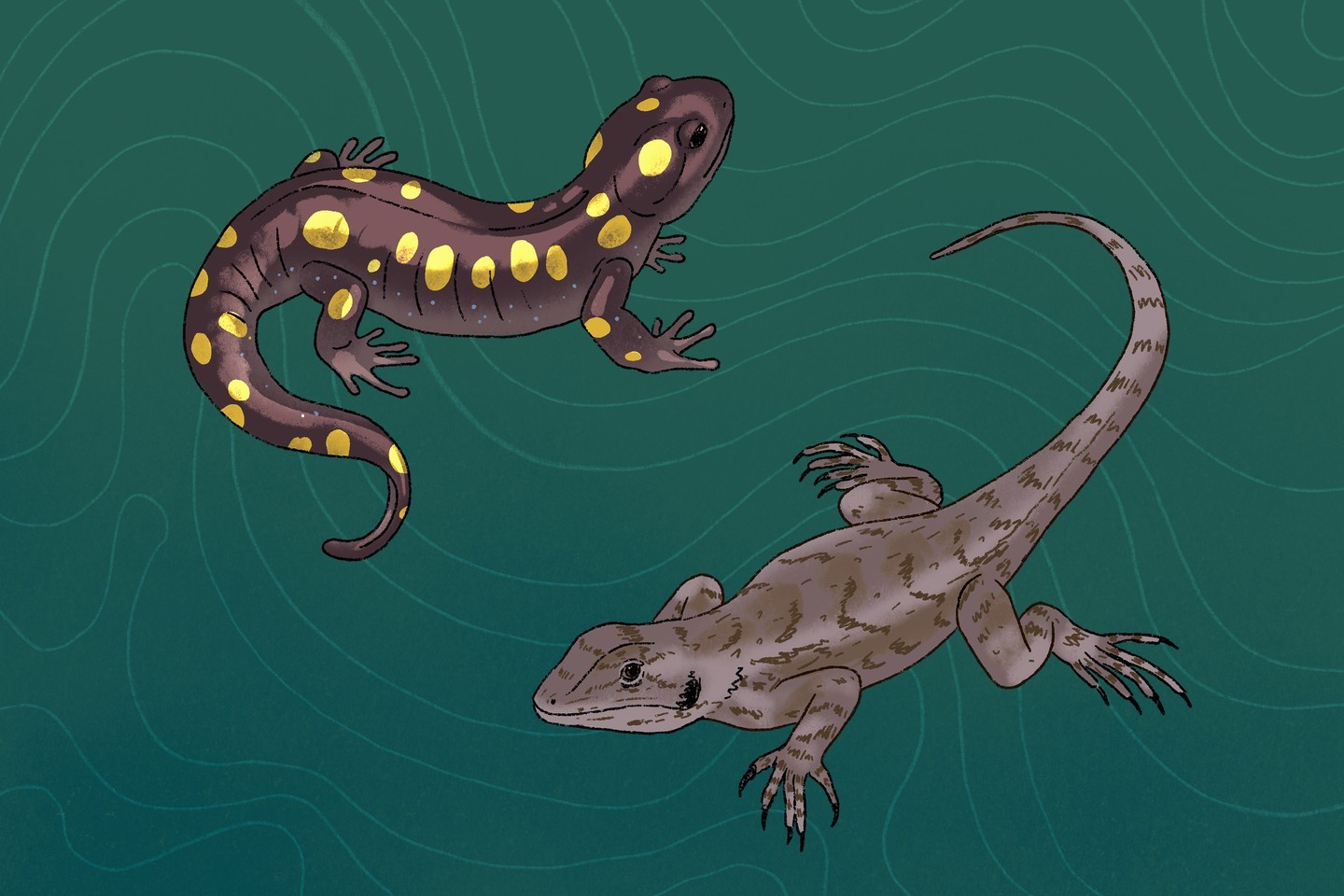Ectothermic Creatures Unraveled: Lizards vs. Salamanders – A Tale of Two Cold-Blooded Cousins
Introduction
Ectothermic creatures, known as cold-blooded animals, rely on their environment to regulate their body temperature. Among the fascinating ectotherms are lizards and salamanders, two seemingly similar yet distinct groups of animals. This blog article will delve into the world of lizards and salamanders, comparing their unique features, adaptations, and lifestyles.
Lizards: Masters of the Sun
Lizards are a diverse group of reptiles found on every continent except Antarctica. Lizards are predominantly terrestrial creatures and highly adapted to their environments, boasting various colors, shapes, and sizes. They have scaly skin, clawed feet, and external ear openings, distinguishing them from their amphibian counterparts.
- Scales and shedding: Lizards have tough, scaly skin made of keratin, which provides protection from predators and helps prevent water loss. They periodically shed their skin as they grow, allowing for the renewal of their outer layer.
- Acrobatic tails: Many lizard species, known as autotomy, can detach their tails when threatened. This defense mechanism distracts predators, allowing the lizard to escape. Remarkably, some species can regenerate a new tail over time.
- Varied diets: Lizards have diverse diets, ranging from insects and small animals to plants and fruits. Some species, such as the Komodo dragon, can even take down large prey like deer and pigs.
Salamanders: Stealthy Swimmers
On the other hand, salamanders belong to the class Amphibia and are found mainly in the Northern Hemisphere’s temperate regions. They possess smooth, moist skin and lack scales or external ear openings. Salamanders are closely tied to aquatic environments, with many species requiring water for reproduction and moisture for survival.
- Permeable skin: Salamanders have moist, permeable skin, which allows them to breathe and absorb water. This feature, however, makes them more sensitive to changes in their environment and susceptible to dehydration.
- Regenerative superpowers: Salamanders are renowned for their incredible regenerative abilities. They can regrow lost limbs, tails, and even internal organs, making them one of the most resilient creatures on the planet.
- Carnivorous appetites: Unlike their reptilian counterparts, salamanders are primarily carnivorous, feasting on various insects, worms, and other small invertebrates. Some larger species, such as the tiger salamander, can even consume small vertebrates like mice and frogs.
Conclusion: The Diversity of Ectotherms
While both lizards and salamanders are ectothermic creatures, their unique features, and adaptations set them apart as distinct groups of animals. With their scaly skin and acrobatic tails, Lizards have conquered a wide range of habitats, while salamanders, with their permeable skin and regenerative abilities, thrive in moist, aquatic environments. By appreciating the incredible diversity of these cold-blooded cousins, we can foster a deeper understanding of the natural world and the myriad creatures that call it home.


